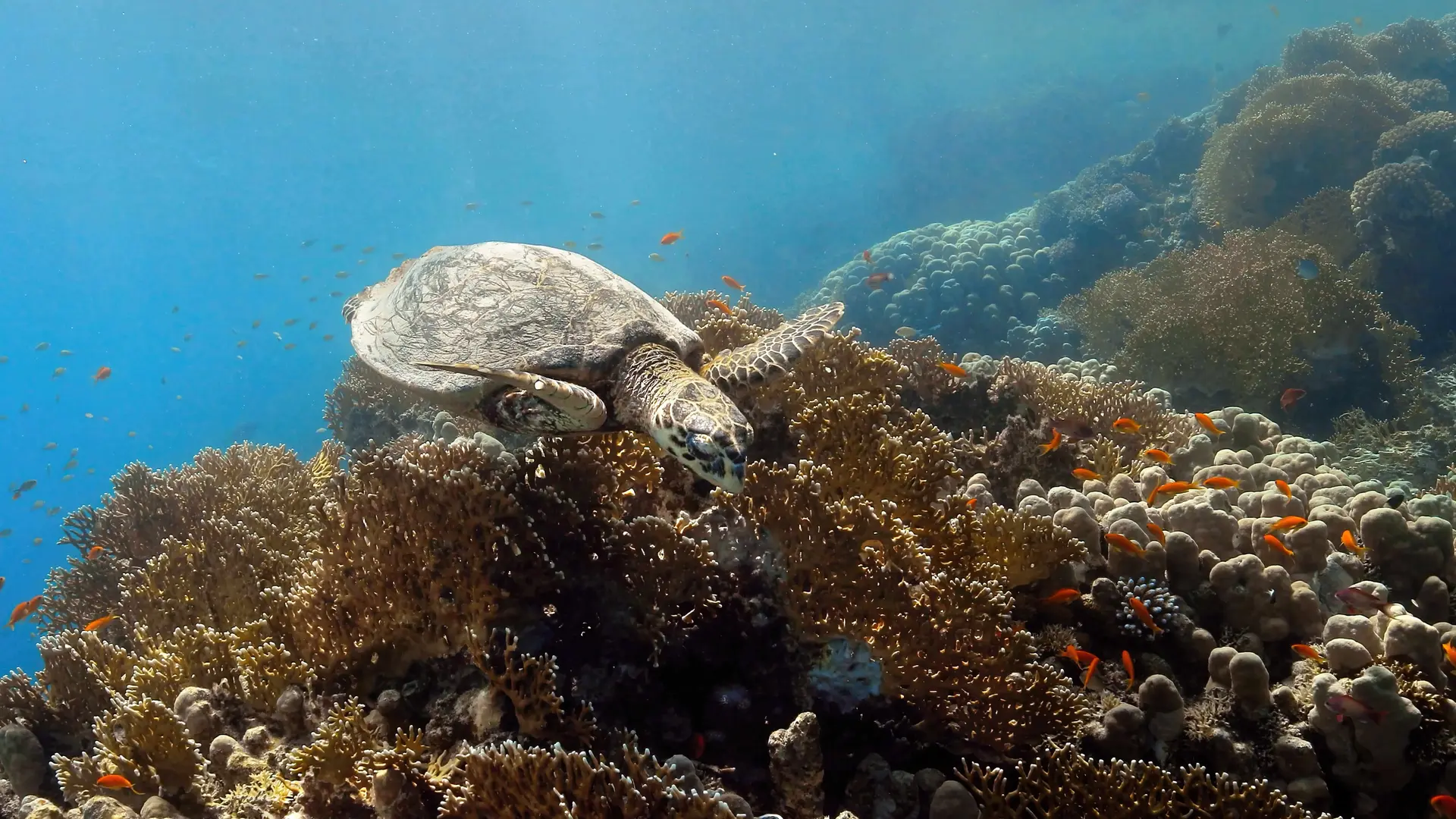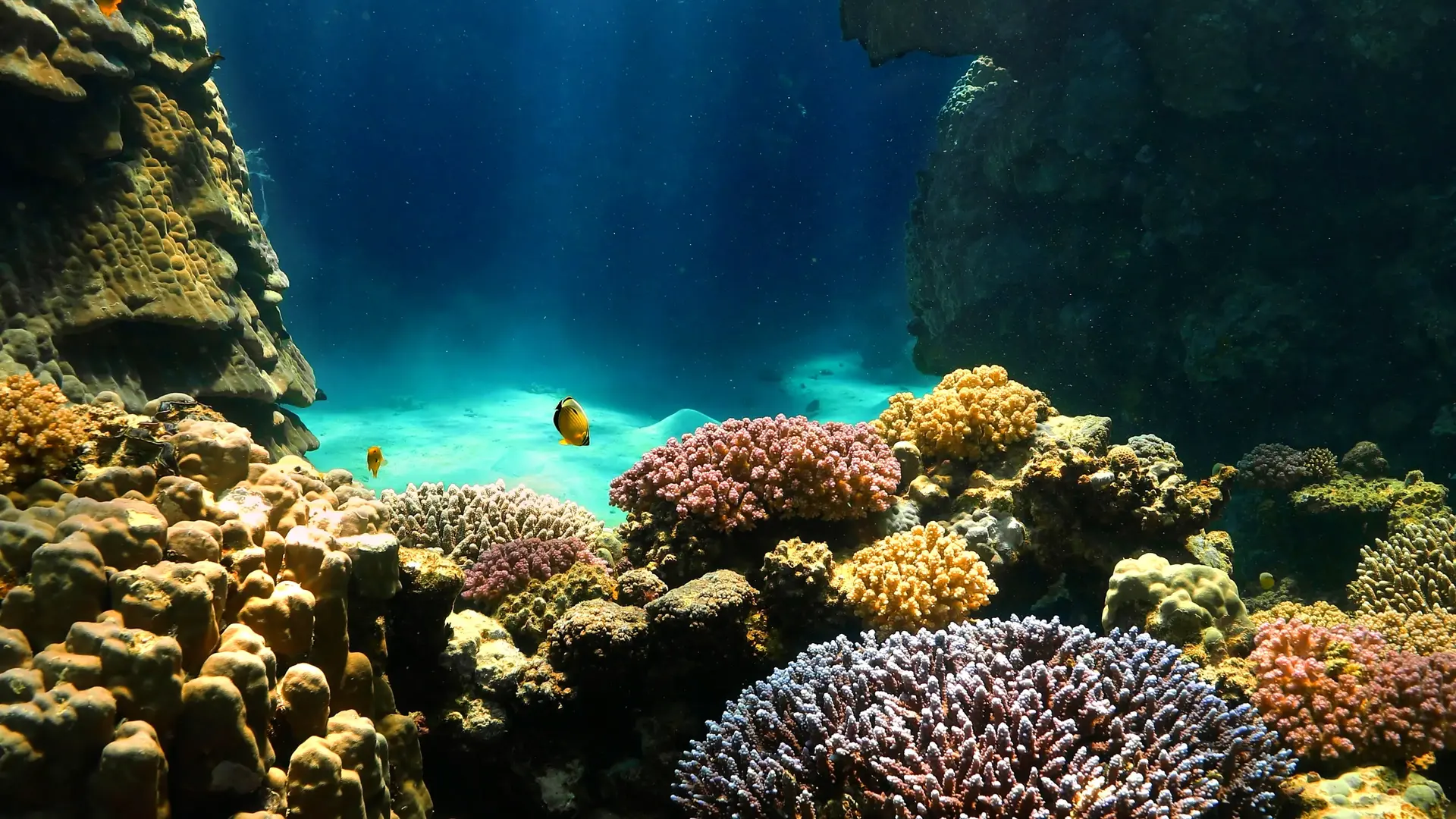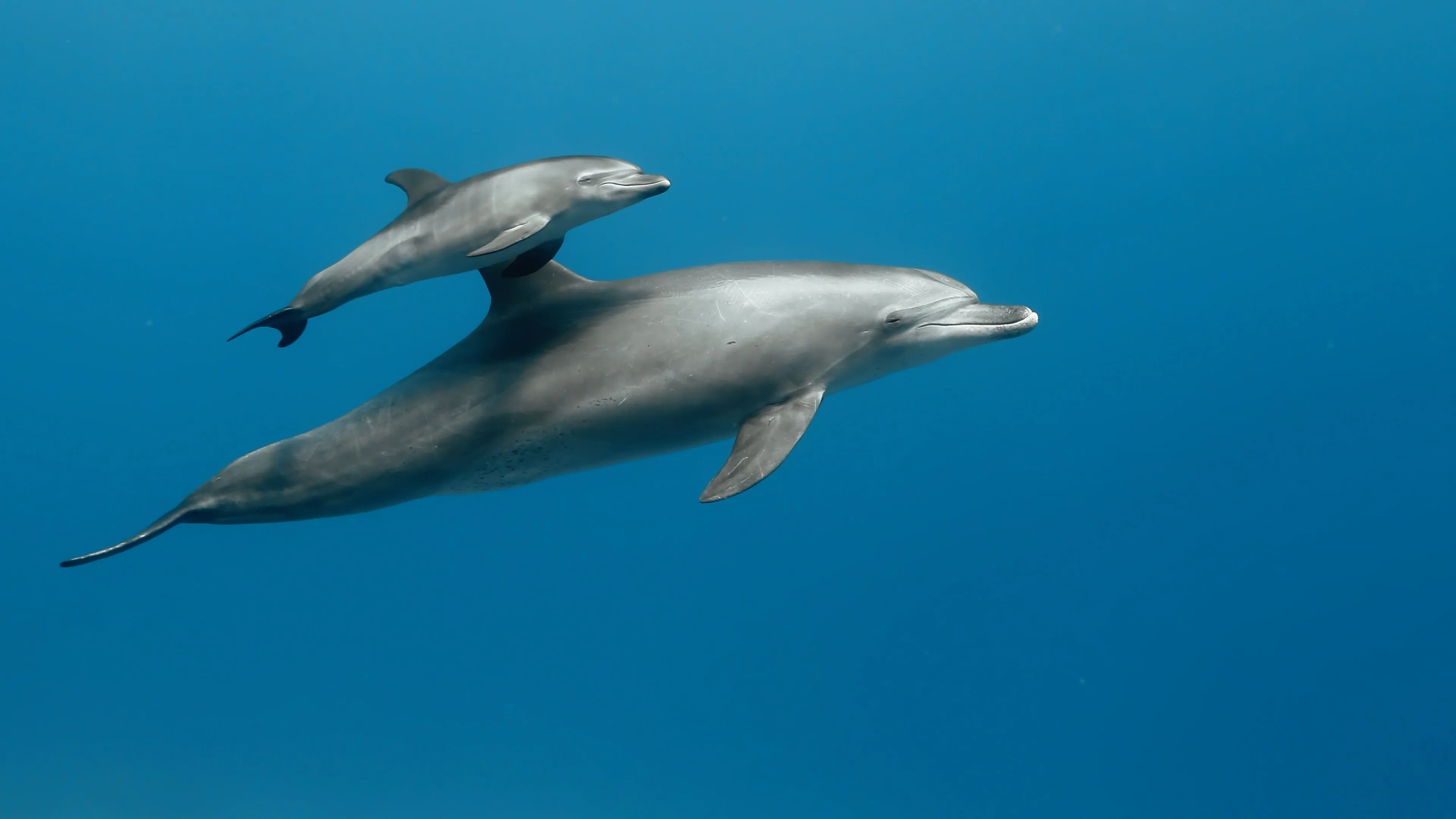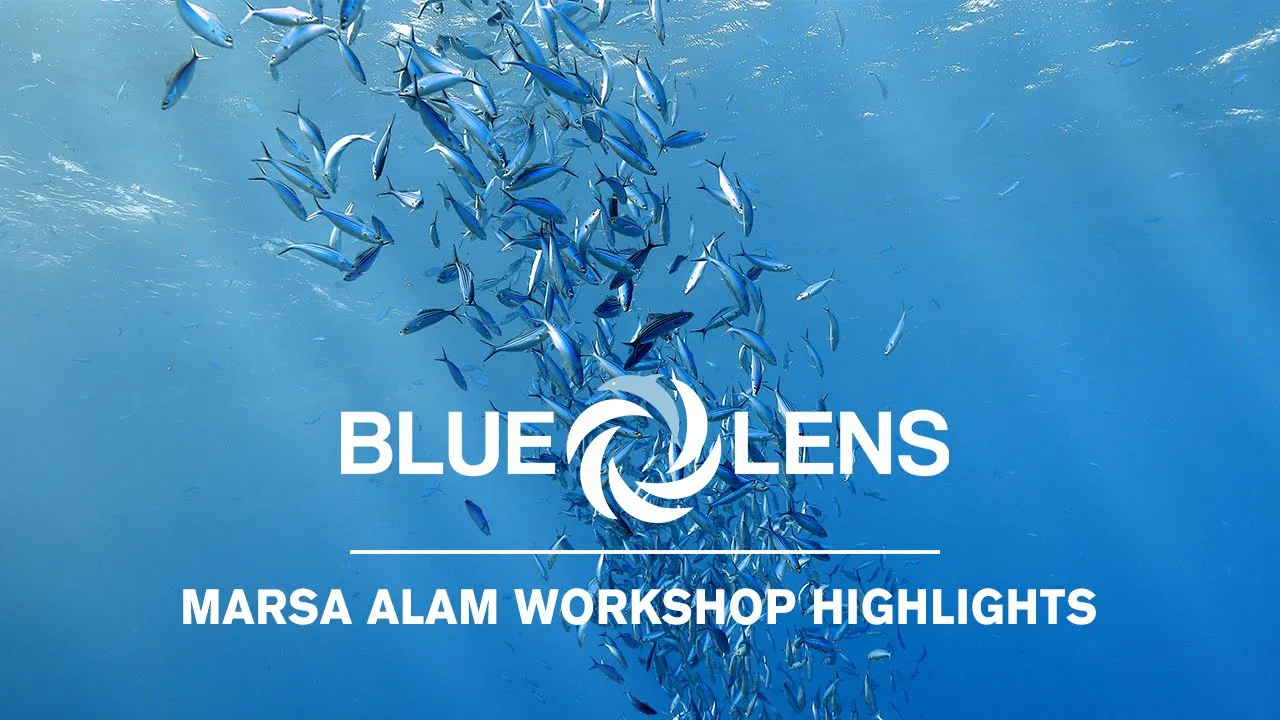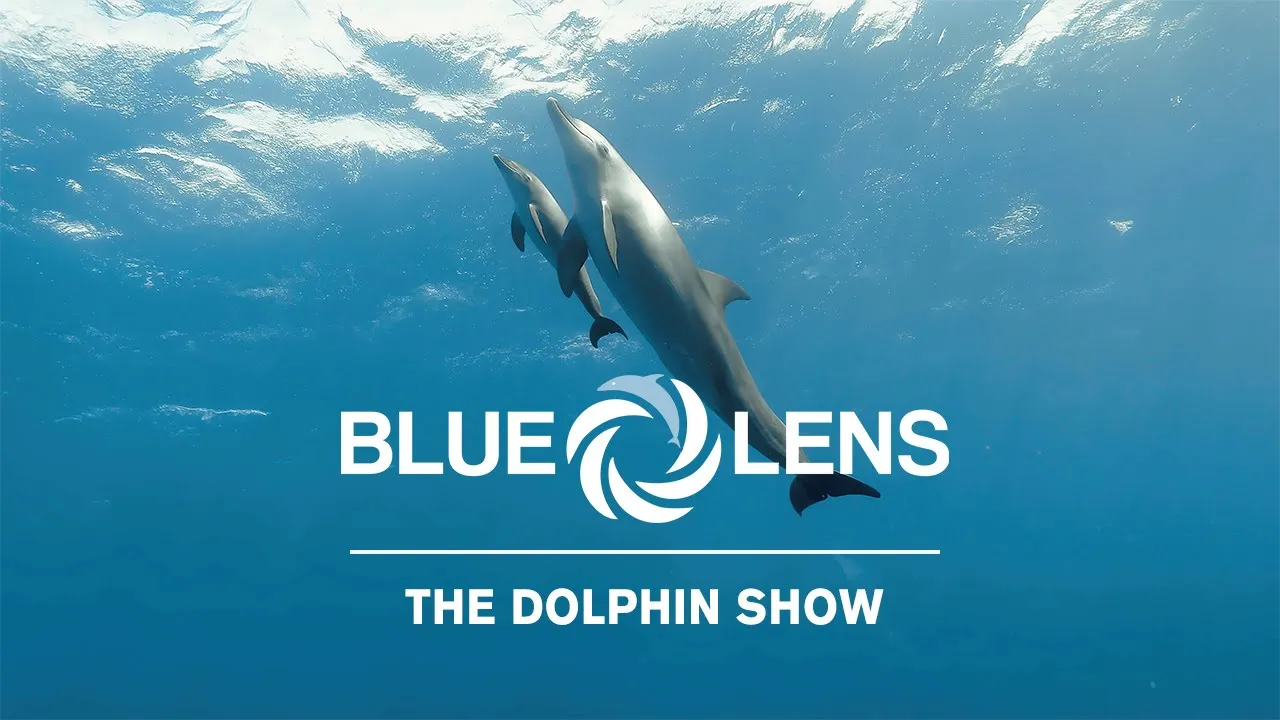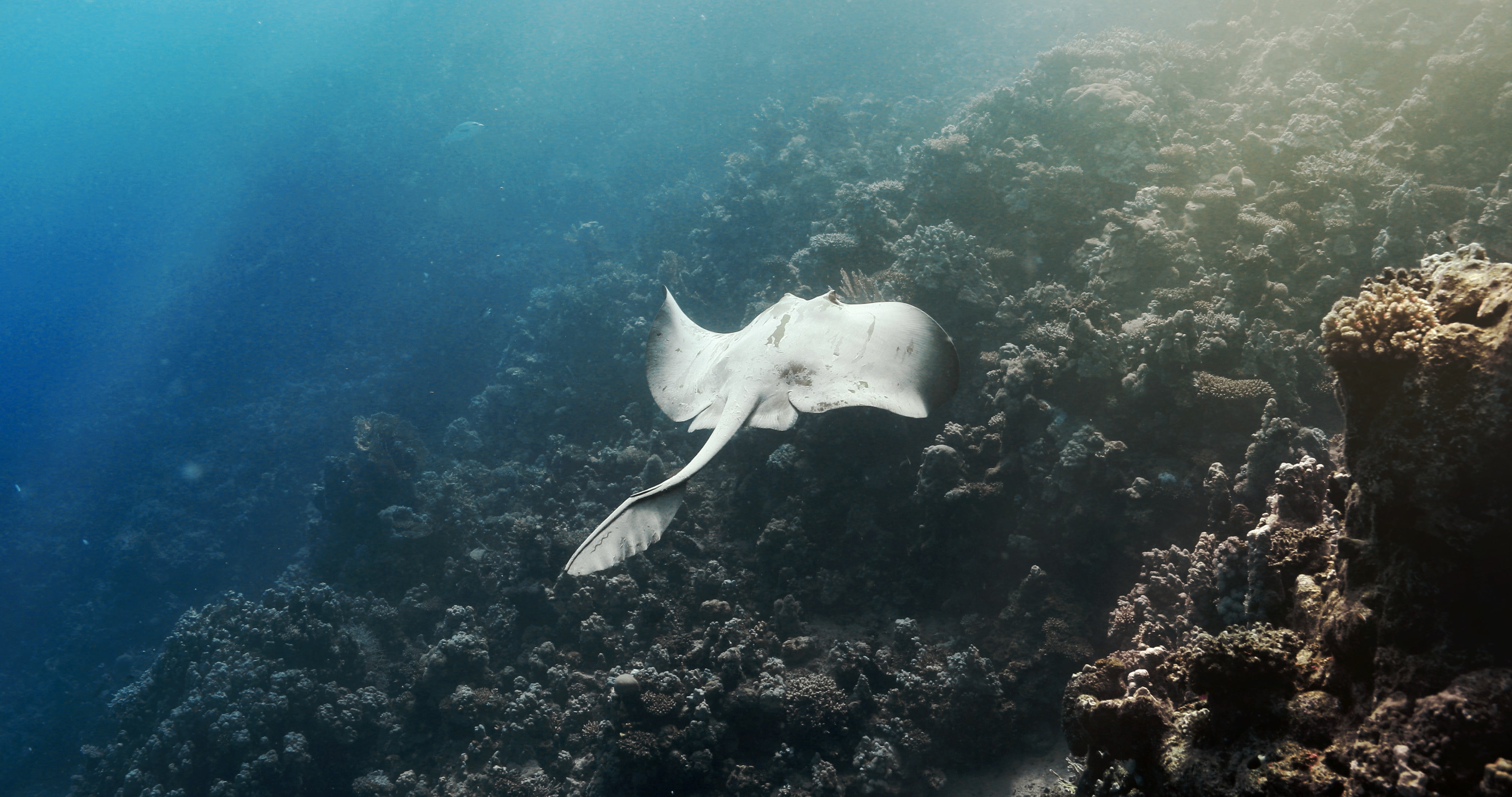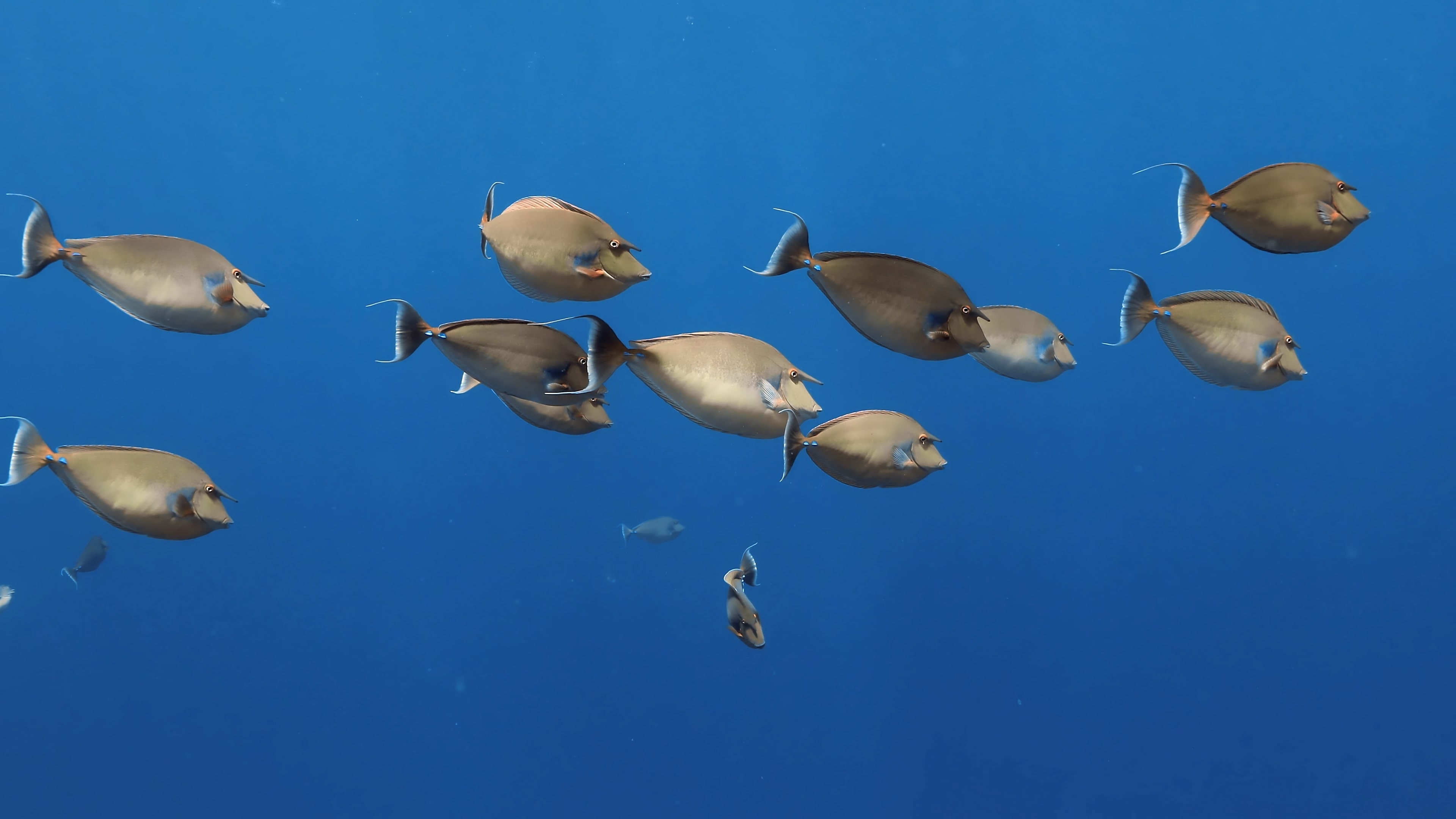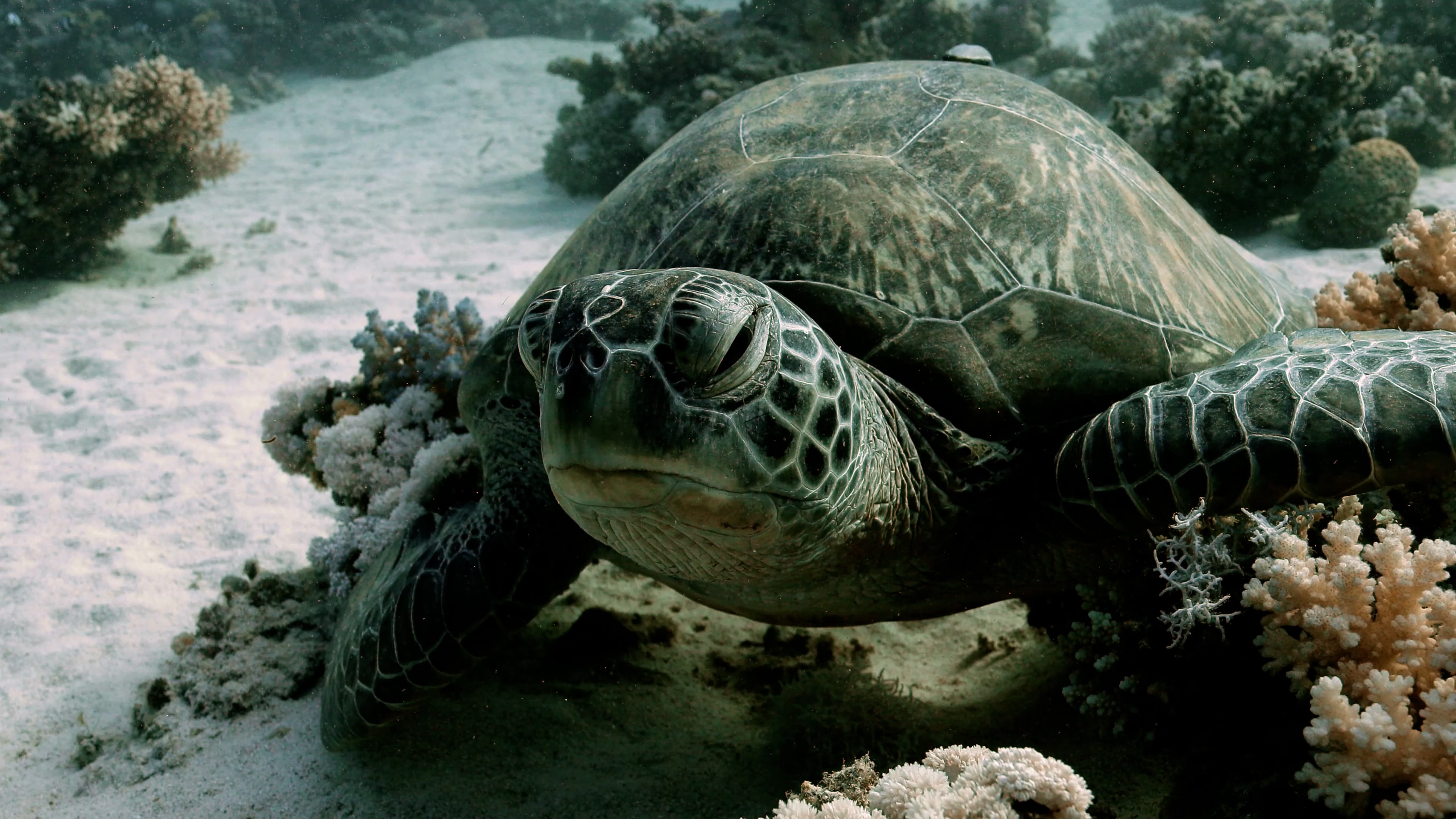Marsa Alam - Mentorship
Dates
open
Choose your own start date
Duration: 7 days
Participants
Minimum participant : 1
Maximum participant : 2
Transport
Content
DIVING REQUIREMENTS
AOW/2* + 50 dives
Please present your diving certifications upon arrival.
HEALTH REQUIREMENTS
A diving medical certificate less than 12 months old is required to participate in this workshop.
You are in good physical condition and can carry out 3 dives per day.
Guides
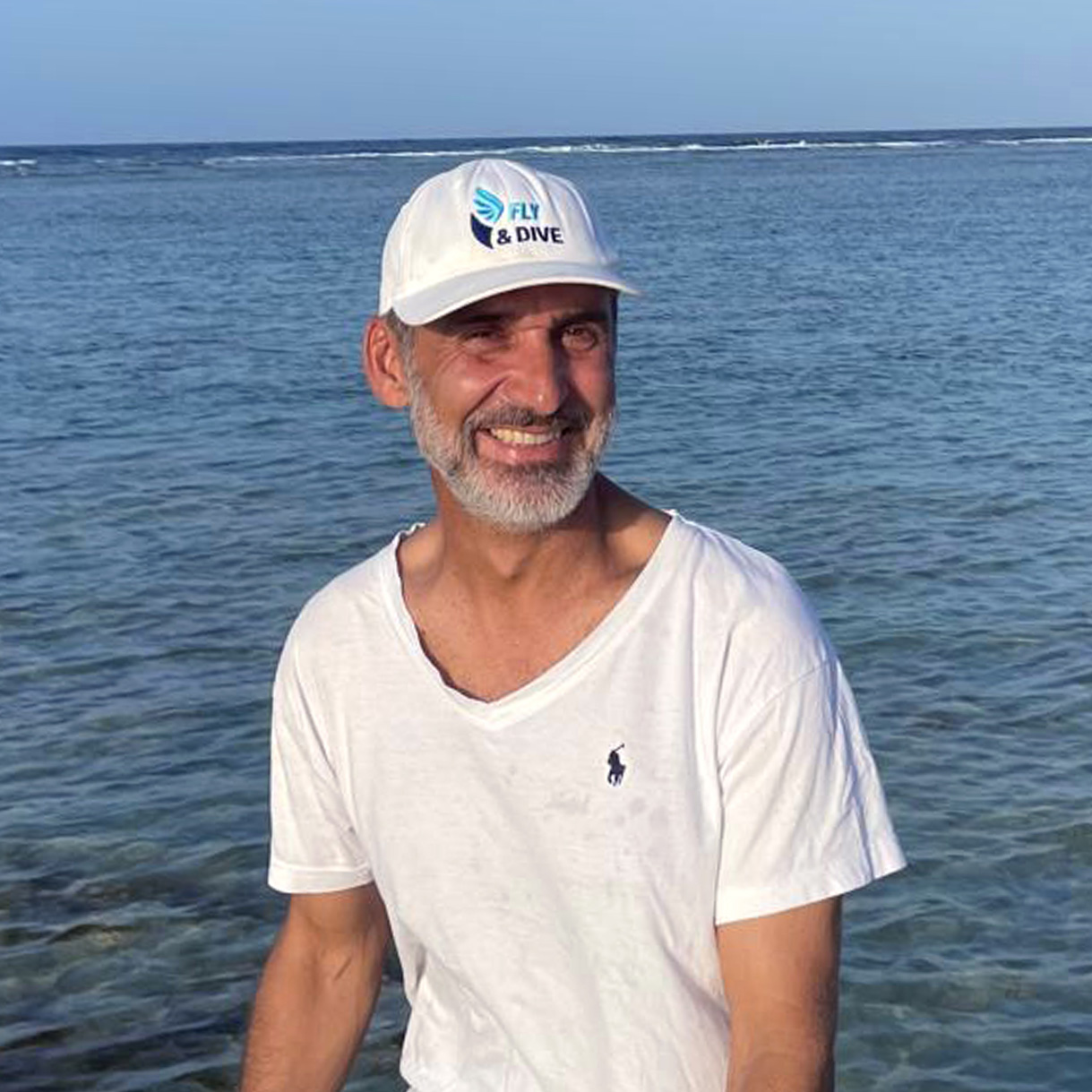
Prices & Info
INCLUDED IN THE PRICE
Airport Transfer from/To Marsa Alam or Hurghada
14 Dives (Tank + weight only)
Overnight stays in 4* Hotel (7 nights*)
Breakfast - Lunch - Dinner - Snacks - soft drinks, mineral water, locally produced beers, wines, and spirits.
Zodiac, Speedboat & Excursion trip
Nitrox FREE
Video/Photo guidance with Olivier Bourgeois
Introduction to Post-production (3 Hours)
Free Access to our Online Post-Production Courses
Introducdtion to Marine Life and Conservation
* Extra nights are possible but optional, do not hesitate to ask us.
*NOT INCLUDED IN THE PRICE
Flight (Roundtrip) to Marsa Alam or Hurghada (Egypt) | Travel & Diving Insurance | VISA (25$) | Diving Equipment** | Photo & Video Equipment***
** Subject to availability you can rent a camera + housing set more info contact us
*** Rental Equipment (6 days) : Mask, Snorkel and Fins : 39€ | BCD, Regulator or Wetsuit (per item) : 42€ | Full Equipment (BCD, Regulator, Dive Computer, Wetsuit) : 150€
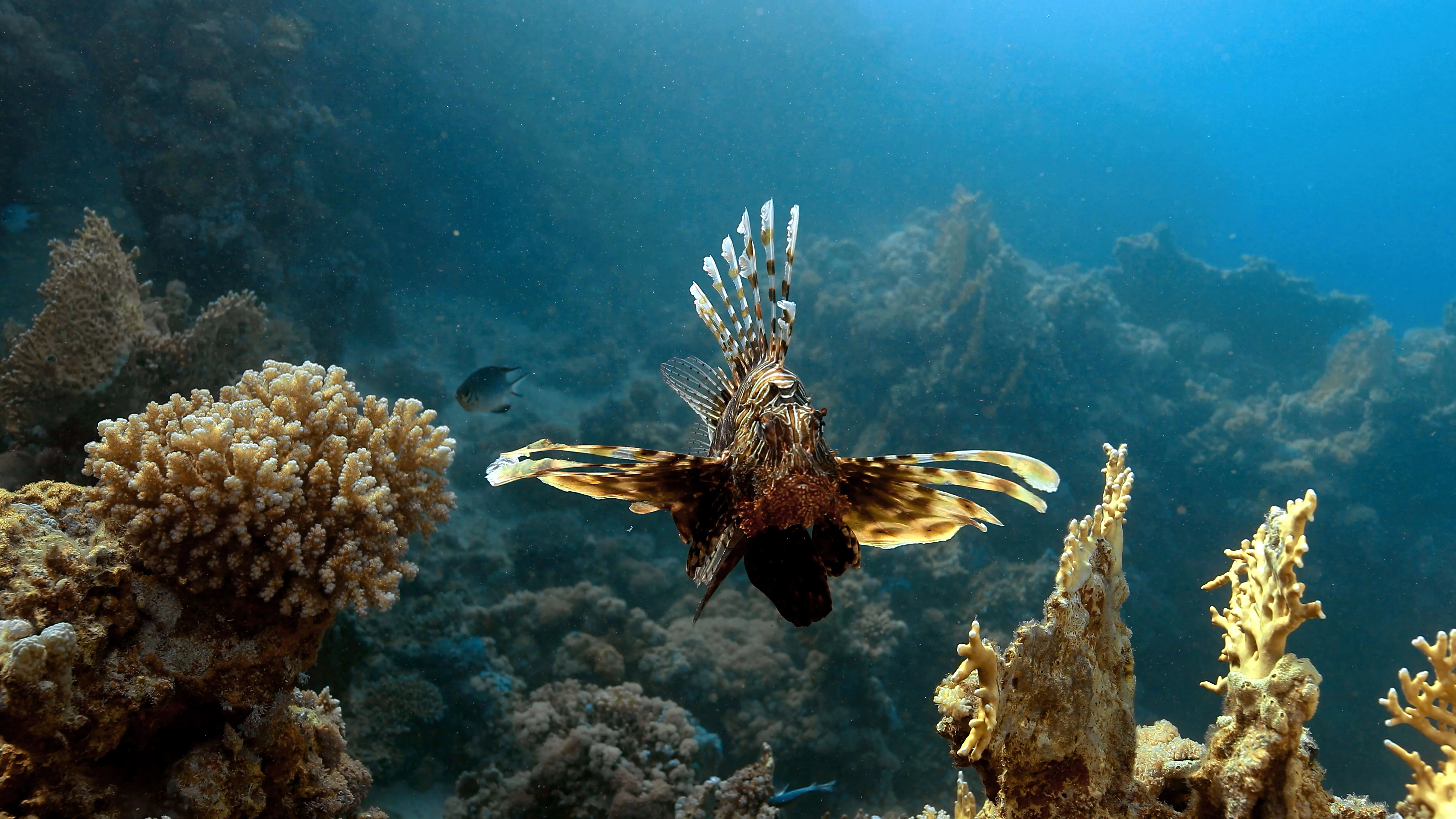
EGYPT - SOUTH RED SEA - OCEANS OF COLORS
This one-week underwater photo/video diving trip takes you to the wonders of the southern Red Sea. Of course, many divers and lovers of beautiful images know the Red Sea by reputation or have experienced it; its 2000 km of coral reefs (one of the 3 largest on the planet) teeming with marine species are among the great “classics” of scuba diving.
All along the coast which runs from Hurghada to Wadi Lahmy, tens of thousands of divers flood intothe hundreds of diving centers, some of which welcome more than two hundred divers per day. We have all been there: the more people in the water, the less chance there is of taking good pictures and observing animals.
However, the purpose of this workshop is not just diving The Red Sea, neither the one we described above, nor the one you may be familiar with: groups of 10 or more divers, intrusive snorkelers, guides overwhelmed or in a hurry, usual and repetitive dive plans, overexploited diving sites where groups of divers follow one another at an infernal pace, dive times limited to 60 minutes and often less if diver levels are not taken into consideration, without even mentioning currents, tides or the position of the sun.
How to take high-quality underwater photos or videos in such conditions? Complicated! This is why we’ve lined up a unique one-to-one mentorship that meets very specific criteria, ours: fully personalized dives with Olivier Bourgeois, zodiacs and speed boats for the sea trips, dives up to 90 minutes, diving times chosen for optimal natural conditions, tailored guidance to anticipate animal behavior, a cleaning station for your camera and diving equipment, and an air-conditioned post-production room with a powerful workstation to review your image and begin diving into the post-production process. This mentorship has it all.
The aim is to obtain both the most spectacular of what the Red Sea has to offer and to put you in the best conditions to achieve the highest level of underwater photography/videography, whether technical or artistic. With approximately 900 species of fish (14% endemic), nearly 350 species of coral, caves, wrecks, pinnacles, fantastic colors, soft and warm lights, the Red Sea is an extraordinary playground for underwater photography and video. With optimal natural conditions almost all year round and such marine biodiversity, very few places in the world can truly compete. Just like us, marine life needs oxygen to live. Since the solubility of oxygen in water increases as the temperature decreases, the chances of observing aquatic animals at shallow depths are greatly increased in colder waters.
After spending a few years exploring the Red Sea, sometimes for several months a year, we have come to the conclusion that May and June are by far the best time of year for this workshop: the water temperature ranges between 22° and 24° Celsius, the waters are crystal clear, the lights are fantastic and we have the possibility to organize zodiac and speed boat trips daily.
Our daily routine during the workshop.
This underwater photo/video workshop is no walk in the park. We start early in the morning, briefing on marine life, natural conditions and diving sites, preparation of equipment, departure by zodiac, speedboat or minibus for more distant outings, 2 to 3 dives each day, shortly after the lunch we start the debriefing of the underwater shots with valuable one-to-one coaching, knowledge of animal behavior... On a daily basis, we adapt to sea conditions, wind, tides, currents but also to light and marine animals. Some of these conditions are predictable, others changeable, which is why we do not stubbornly follow a program planned in advance. Nature is our best guide and ally. If our captains inform us of the presence of dolphins on a nearby spot, we can change our plans, right?
Visibility, light & animals are our guides.
Of course, no one can (legally) guarantee you that you will dive with dolphins, sharks, turtles or any other incredible marine species, which is why we have set up a flexible organization that always follows very specific rules for give you the maximum opportunity to make unique encounters and outstanding images. Whether photographing or filming marine animals, the incredible richness of the coral reef, the dramatic atmosphere of shipwrecks or the captivating colors of the Red Sea seascapes, a great visibility and a good lighting guarantee entry in the post-production room with the best raw footage possible. This is where your adventure takes a new turn.
Photo & video requirements
own photo equipment and the basics of photo / Video is a big plus. If you do not master all the settings, Olivier Bourgeois and his team assist you on site at any time. On the first day of the workshop, we photograph or film in the house reef to review together the technical basics like shutter speed, ISO, aperture, etc. so that you are perfectly prepared for the following days.
Underwater, everything seems deceptively slower, but the reality is different: you only have a few seconds to capture the right image or video clip, so we recommend a camera with effective and fast autofocus.
An underwater western scenery
These 2000 km of coral reefs are both the lifeline and the lungs of this resilient ecosystem. With its pinnacles, canyons, atmospheric caves and shimmering coral colors, the Red Sea offers grandiose seascapes and warm lights that have everything from an underwater western.
As an underwater cinematographer, what impresses me the most are these lighting effects which offer a unique underwater spectacle. The edges of the underwater cliffs, with their irregular contours sculpted by the waves, change the course of the sunlight in the water, turning it into magical and divine rays that illuminate the seascapes.
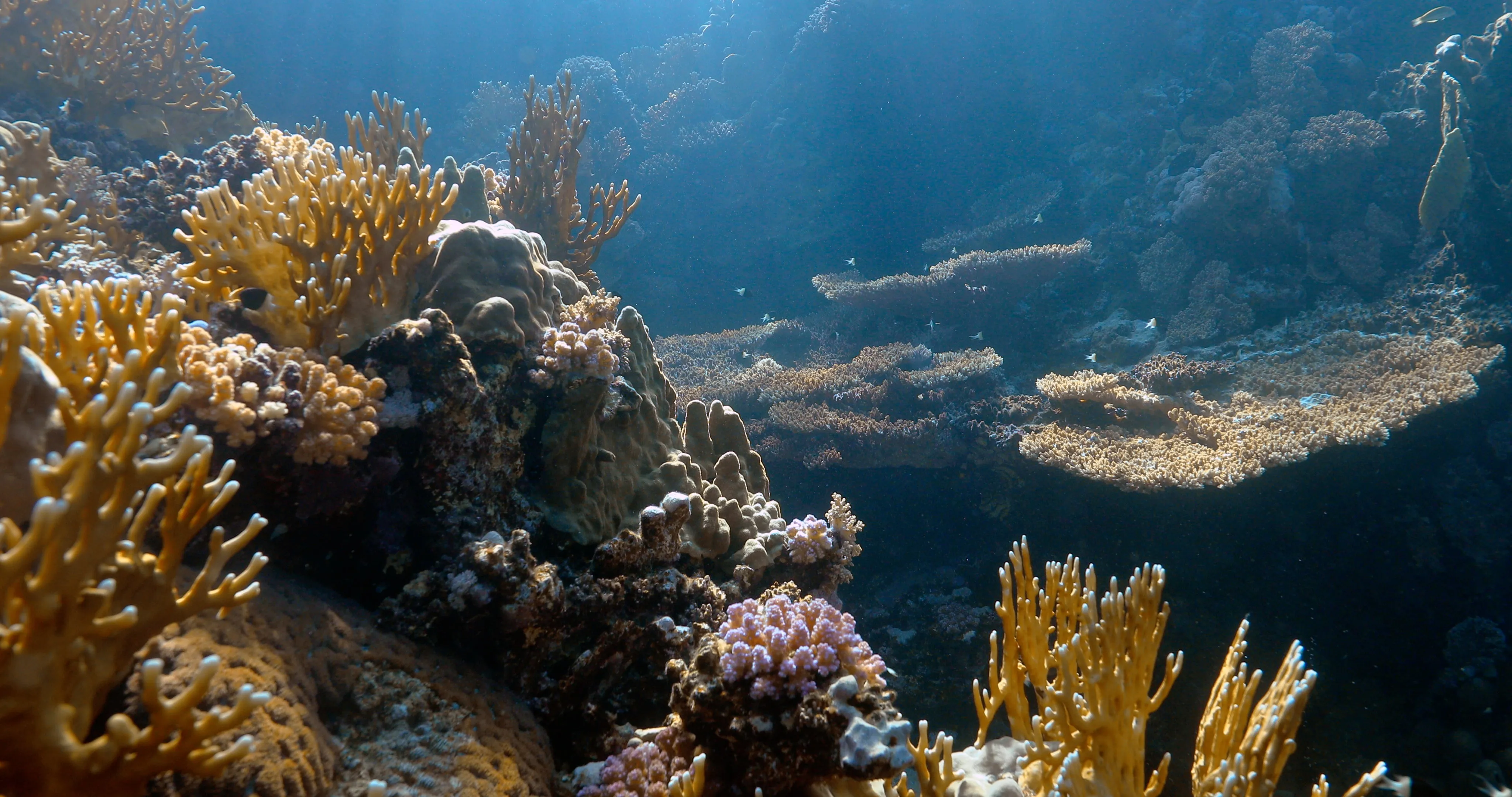
From rare or endangered species to the most emblematic species of the Red Sea
Indo-Pacific bottlenose dolphin (Tursiops aduncus)
This cetacean is the one we encounter most frequently during our underwater photo/video workshop in the Red Sea. The period from May to mid-July is by far the best for filming and photographing them from a diving angle. As it is mating season, they are very active and playful.
Why do Indo-Pacific bottlenose dolphins interest us so much? First of all because it is a near-shore species, unlike Spinners which swim a little further from the coast or Risso which generally prefer deeper offshore waters, so we don’t have to travel far to sight them. Then, these dolphins, generally observed in small groups of 5 to 12 individuals, are social, clever and very curious, especially with divers, which allows us to capture images that are often quite exceptional.
Sea turtles
Of the 7 species of sea turtles that inhabit the seas and oceans of the blue planet, 4 can be observed in the Red Sea (Some say 5 but to be honest, the chances of you seeing a loggerhead turtle in the Red Sea are almost zero). All species of sea turtles are considered vulnerable or endangered by the IUCN and 2 of them are critically endangered: the hawksbill turtle and Kemp’s ridley turtle. The ones we encounter most often during our underwater photo/video workshop are the Hawksbill (Eretmochelys imbricata) and the Green Turtle (Chelonia mydas). They are often shy and frightened by divers’ bubbles, so this requires a gentle and respectful approach to this animal that roamed the waters alongside dinosaurs more than 110 million years ago.
But, lucky us, these marine reptiles offer us 2 opportunities to take incredible images. The first is that the turtle has lungs and must come to the surface to breathe, so at this precise moment it is easy to spot and approach. Secondly, the turtle is extremely gluttonous and in this particular situation, nothing exists other than the small sponges, jellyfish or crustaceans on which it feeds. So we just have to follow her during her meal, which sometimes lasts more than 30 minutes.
Of the 100 species of sea turtles described from fossils, only 7 still survive today. Since the last century, the population of hawksbill turtles has declined by 80% and that of green turtles by 90%. It is essential not to be jaded by this type of encounter and to appreciate our luck as diver photographers/filmmakers to still be able to cross their path.
Rays and Sharks
I know that many expect me to talk about sharks (and I will come to it) but I would first like to draw your attention to the great diversity and rarity of the different species of rays that can be seen south of the Red Sea. Like turtles, rays were contemporary with the dinosaurs and have been hovering in the ocean for more than 145 million years.
In the coastal areas where we dive, there is no cleaning station to observe the rays over a long period of time, they only pass through, so our reactivity and our ability to anticipate their movements is essential to get great shots: Dark Spotted Stingray (Himantura Uarnak), Spotted Eagle Ray (Aetobatis Narinari), Fantail Stingray and of course the Blue Spotted Ribbontail Ray are the most common encounters. Beyond the fact of being seen during almost all dives, the blue spotted ribbontail ray (Taeniura lymma) offers a slight advantage compared to the other species mentioned above, it searches for its food in the sand, its attention being focused on this quest, we can capture photos or videos at very close range. Even if it is less frequent, it is not uncommon to come across the majestic Manta Ray (Mobula alfredi) or the shy Leopard Whipray (Himantura leoparda).
There are 44 species of sharks in the Red Sea, an unexpected encounter is always possible, but apart from reef sharks like the white tip shark, they are generally seen a little further from the coast on diving sites like the legendary Elphinstone (which is on the Workshop program if the weather permits) or on Liveaboard. If you are passionate about Oceanic whitetip shark (Carcharhinus longimanus) grey reef sharks and silky sharks (Carcharhinus falciformis), we recommend that you favor the Workshop that we organize in October, your possibilities of photographing or filming them will increase significantly.
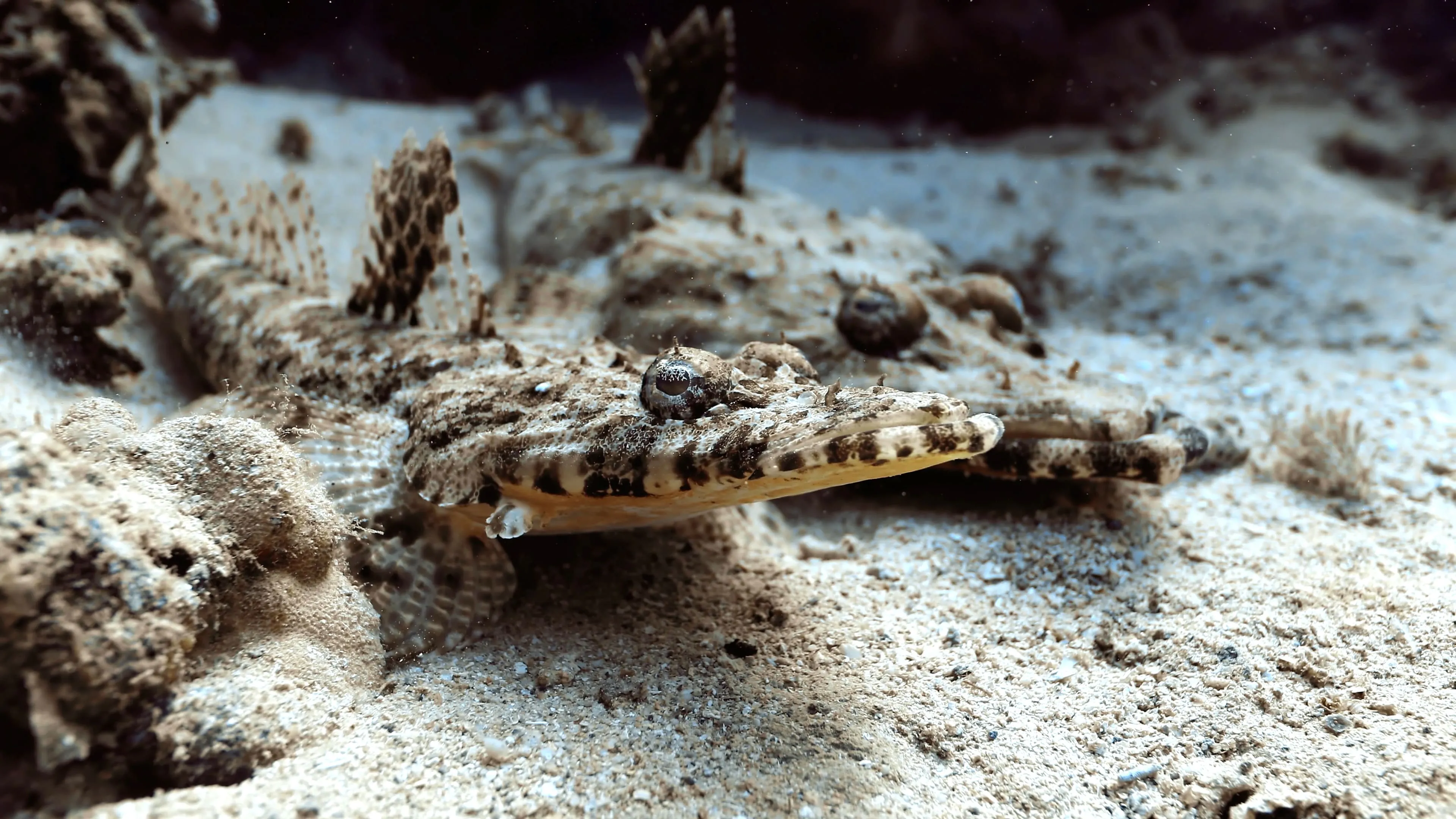
Cowtail Stingray
The day I first encountered a Cowtail Stingray (Pastinachus Sephen) completely changed my view of the species as a whole: the indescribable sensation of seeing a creature emerging from the depths that bears witness to hundreds of millions of years of life on earth. There are many moving encounters in the oceans, but few compare to this one. Considering that the species reproduces very slowly and is hunted for its skin used to polish wood but also as a source of shagreen or galuchat for fashion accessories or furniture, its population is decreasing at a worrying rate.
The Dugong (also called “sea cow”)
Even if we regularly cross paths with it in the bay during our zodiac trips (ther are 2), it is more difficult to approach it while diving. This marine mammal is extremely shy and elusive when not on a seagrass spot eating. But the month of May is a good time for this icing on the cake. Again, this is an endangered species, but recent studies have concluded that dugong numbers are starting to increase again in the Red Sea.



1. The mentorship program!
In this one-to-one mentorship, award-winning underwater cinematographer Olivier Bourgeois opens the doors to his world and shares with you, personally, all his secrets, his creative process, his methods to approach the marine fauna, and hard-earned lessons from years of professional underwater filmmaking. It’s a fully personalized experience, you will dive together, review footage together, and shape your technical and artistic skills dive after dive. No filters, no rush, just you and a direct line to a professional who guides, observes, helps you improve and enjoy the pleasure of making great shots.
2. Overnight stays
We are staying in a pleasant 4-star resort. The rooms (25m2), all with a private bathroom and a very pretty balcony, are located a few meters from the diving facilities which welcome us during this workshop. The beds are large and comfortable. All rooms are equipped with a refrigerator and, most importantly, a large desk that allows you to handle your underwater photography and video equipment: assemble, disassemble, clean, grease the joints of your housing, reassemble, store your lenses, install your battery charger, transfer photos/footage taken during the day to your hard drive or laptop if you come with one.
3. Our typical day
We often start with a relaxed breakfast and a one-on-one briefing, optional, of course, if you need a bit more sleep. Each day combines a “practical” part with 2 to 3 dives on breathtaking sites and a «theoretical» part in the afternoon (never more than 2 hours). Together we analyze your underwater photos and videos, discuss shooting techniques, camera settings, post production and prepare you for the specifics of the local marine life/ environment. After a full day, eyes still full of Red Sea magic, we can share a drink at the Diver’s Bar and enjoy the sunset before heading to dinner.
4. Diving Program & Sea trips
We have established a diving program that gives us enough flexibility if the weather changes. With over 40 dive sites in the area, we choose our destinations based on sea conditions, the light at different times of day, and the tides. While transport to the sites may occasionally be shared, once in the water, it’s just you and Olivier — like a compact, mobile film crew. Whether we head out by zodiac, speedboat, or minibus, the logistics are fully adapted to our needs. Mineral water, electrolytes tablets (For hydratation) and anti-fog are available at all times.
5. Egypt in May/June
- • Visibility from 18 to 35 meters
- • Water temperature: 22° to 24°
- • Average air temperature: From 21° (night) to 31° (daytime)
- • wetsuit recommendation: long / 5 to 7mm
IMPORTANT: All dives are done one-to-one with Olivier. This exclusive format offers undivided attention and allows for real-time support, personal feedback, and dives tailored to your pace and creative intent. It also creates the ideal conditions for approaching marine life, essential for capturing authentic, undisturbed behavior and taking breathtaking shots.
6. Who is this mentorship for?
Whether you are an enthusiastic beginner, an intermediate photographer, or a passionate underwater filmmaker ready to go further, this one-to-one mentorship is for you. You just got a new camera or housing ? This course will cover all the basics. Are you already comfortable with your equipment but not entirely satisfied with your results? We will push your skills to the next level. Do you want to improve your approach to marine wildlife, or better understand the species you’re filming to anticipate their movements? Want to explore the early stages of post-production? It’s all part of the journey.

